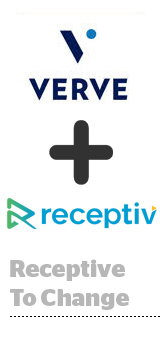
Location marketing platform Verve is angling for a piece of the growing programmatic mobile video pie with the acquisition of in-app video ad vendor Receptiv (formerly MediaBrix).
The deal, announced Wednesday, opens up a rich new seam of inventory for Verve, said CEO Tom Kenney, who declined to share terms other than to say the transaction was “in line with current market valuations.”
Together, the companies have a combined SDK footprint of more than 5,500 apps with little duplication between them.
Verve’s stable of publishers is composed of location-friendly apps, such as weather, entertainment, sports and local news, while Receptiv’s SDK is primarily nested within games and utility apps.
The demand is also accretive, said Receptiv CEO Ari Brandt, whose new title is EVP of strategic development at Verve, where he’ll oversee supply, programmatic ops and corporate sponsorships.
“Verve is primarily focused on display and we’re 100% video, so together we can immediately go for a larger share of wallet from brands,” Brandt said.
Kenney knew that Verve needed to move faster in programmatic and video. Mobile programmatic spend on video is set to hit $7.14 billion this year, a more than 33% increase compared to 2017, according to eMarketer.
But Verve didn’t have the tech to take advantage. The engineering team at Verve spent nine months last year trying to build its own video solution. With little video engineering experience, however, the company struggled to develop something it could scale and get to market quickly. An acquisition ticked both of those boxes, Kenney said.
“Now we’ve got a full suite of display products and mobile video products,” he said.
After Kenney met Brandt in January at the Consumer Electronics Show in Las Vegas, the engagement quickly moved to marriage. Even before the ink was dry, Verve and Receptiv started working to integrate their SDKs, a process Kenney said will be completed no later than Q4.
The duo are also integrating their respective first-party data management platforms on the same timeline. Both companies have engagement data and data tied to household and device IDs.
“By marrying the two data sets, we end up with a more interesting and more complete picture of these consumers,” Kenney said.
By layering location into the buy, brands can also “add more value and communicate with people during their moments of need,” Brandt said.
The vision is to touch the customer journey from awareness at the top of the funnel with video to direct response with display, ending with measurement after the fact. Verve acquired beacon company Roximity in 2016 to support online-to-offline attribution.
And Verve is planning a few more acquisitions for the coming year to help with top-line revenue growth and sales. Expect at least one acquire-hire that will be about “picking up some great salespeople,” said Kenney, who noted that Verve is planning to hire salespeople, too.
The company also just brought on a handful of new executives over the last couple of months, including former Viant sales SVP Erin Madorsky as CRO; Mezzobit founder and OpenX vet Joseph Galarneau as chief product officer; and AdColony alum Mark Fruehan as EVP of enterprise platforms.
Total headcount at Verve is now around 200, including 40 employees who joined from Receptiv, minus duplicative roles at both companies. Over the past year, Receptiv slowly reduced redundancies in its headcount by around 10%, and Verve did the same. Verve also closed two small offices this year: one in Austin, which housed two people, and a second in Denver, which was home to the Roximity team, most of whom have left Verve to pursue other projects.
Verve’s reduced headcount also includes the layoffs of 20 employees at its UK office in April. Verve closed its European business because the amount of revenue generated didn’t justify the cost of compliance with the General Data Protection Regulation, Kenney said.
The company’s efforts are better spent focusing on the US market, where Verve makes the bulk of its revenue, he said. Verve’s overall revenue topped $100 million last year.
“We’re SDK-based or, at a minimum, server-to-server integration-based, so we’re actually in a good position in terms of supporting GDPR and first-party consent,” Kenney said. “But to support those efforts in the UK would cost us $3 million – and the business we were doing was only worth $5 million. So, in the end, it just wasn’t worth it.”
This post was syndicated from Ad Exchanger.

More Stories
Here are the Cable News Ratings for March 2025
As Economic Challenges Persist, Your Brand Can Still Innovate
NBCUniversal and Jeep Rev Up a Partnership For The Real Housewives of Beverly Hills Reunion